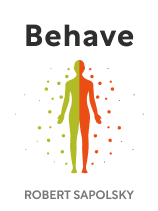

This article is an excerpt from the Shortform book guide to "Behave" by Robert Sapolsky. Shortform has the world's best summaries and analyses of books you should be reading.
Like this article? Sign up for a free trial here .
What is the function of the amygdala? What behavior does the amygdala govern?
The amygdala is a little almond-shaped structure located in the brain’s medial temporal lobe. Its main function is to respond to threats, whether real or perceived. The amygdala activates very fast, often overriding logic and rationality.
Here’s a look at the amygdala’s function and the psychology behind its workings.
The Amygdala: Fear and Aggression
The amygdala is part of the limbic system, the “middle” level of the brain, and controls our feelings of fear, anxiety, and aggression.
Sapolsky says that our brains will naturally organize people into two groups: “us” and “others” (sometimes you might hear this as “in-group” and “out-group”). We feel positive emotions (pride, empathy, love, and so on) toward people whom we’ve determined are like us, and negative emotions (hatred, fear—emotions controlled by the amygdala) toward those we’ve decided are “others.”
Notably, the amygdala can activate much more quickly than the neocortex, meaning that our fear and hostility response to an “other” is automatic. The logic-based neocortex will then (hopefully) override that response.
To illustrate the point, Sapolsky shares a study where subjects were shown images of people of different races while hooked to a brain scanner. People’s amygdalas would activate upon seeing such an image for just one-tenth of a second—too short a time for the subjects to even identify what they’d just seen, or to consciously feel their response to it. If the image remained onscreen for longer, the frontal cortex would then kick in and soothe the aggressive response.
Other Functions of the Amygdala
In psychology, the amygdala’s function is associated with fear and the classic “fight or flight” response. However, recent research suggests its functions may be more complex than simply identifying and responding to threats, including:
Evaluating stimuli. In other words, determining whether they’re positive or negative, and therefore what kind of emotional response is needed.
Memory. The amygdala may be involved in processing and storing memories that have strong emotional components.
Addiction. Some experiments have found that stimulating the amygdala increases subjects’ desire for addictive drugs. One study found that rats would work about three times harder for cocaine when the drug was paired with stimulating the amygdala; conversely, when the amygdala was deactivated, they didn’t want the cocaine at all.
Social interaction. Though the exact reasons aren’t yet understood, researchers have found that amygdala damage can impair our social skills and our ability to empathize with others.
Responses to Stress
Stress increases amygdala function while suppressing the frontal cortex—in other words, it makes us more prone to reflexive, habitual, and selfish behavior, and less able to regulate that behavior with logic and reason.
Furthermore, Sapolsky says that one of the most effective ways to reduce stress is to behave aggressively toward someone else. For example, someone who’s stressed out at work is more likely to lash out verbally or physically at “safe” targets like a spouse or a child, because that helps relieve the stress. Note that Sapolsky does not excuse this behavior; he’s merely offering a partial explanation of the neurology behind it.
| The Effects of Chronic Stress While short-term stress can make us unpleasant (or even dangerous) to be around, long-term stress is known to have devastating effects on the body and mind. Mayo Clinic says that chronic stress—and long-term exposure to stress-related hormones such as cortisol—can lead to numerous health problems, including: – Anxiety and depression – Heart disease – Insomnia – Memory loss Furthermore, unhealthy stress management techniques like drinking alcohol and overeating only compound these problems. Instead, Mayo Clinic recommends learning some healthy coping mechanisms like working out, or indulging in a hobby. In When the Body Says No, physician and psychologist Gabor Maté also discusses some of the diseases that chronic stress can give rise to, including multiple sclerosis, irritable bowel syndrome, arthritis, and even cancer. According to Maté, many of these diseases appear more frequently and more severely in people who suffered childhood trauma and neglect, and he argues that they must be cured with a holistic treatment regimen that encompasses physical, mental, and emotional health. |

———End of Preview———
Like what you just read? Read the rest of the world's best book summary and analysis of Robert Sapolsky's "Behave" at Shortform .
Here's what you'll find in our full Behave summary :
- An exploration of the myriad influences on human behavior
- A scientific look at why some people do such terrible things
- If there's really such a thing as free will






